Benefits of Using Lowest Friction Bearings
Friction in any bearing is generally regarded as an undesirable quality. Still, when it comes to high-speed bearing applications, the efficiency and the degree of friction depend on low-friction bearings, which enable quick rotation of parts within a bearing. This article investigates low friction bearings from the standpoint of motion forces and kinetics, design and functional parameters, and devising high-performance characteristics in multiple industries. Low resistance with no loss-bearing parts, such as rotating bare shafts and planted shafts with magnets, are active and zoomable parts in different sectors where motion transmission at rapid levels is an essential technique. The bearings will efficiently serve their intended purposes, often improving overall operational efficiencies while minimizing energy requirements in high-speed systems.
What are Friction Bearings, and How Do They Work?
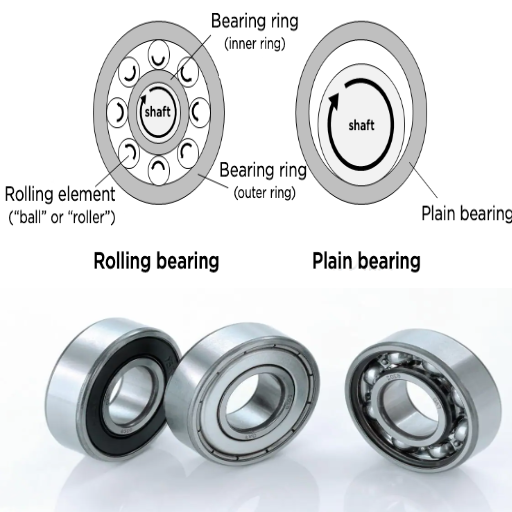
Understanding the Basic Design of Low Friction Bearings
The design and construction of low-friction bearings are permanent modifications that urge drag reduction in high-speed systems. The primary design constituents include the engineered configuration of components and smooth raceways, which incorporate rolling elements such as bearing balls or rollers made of high-quality raw materials such as stainless steel and ceramic. Such material selection is crucial as it provides more significant wear and thermal expansion resistance, thus maintaining performance at different operating conditions.
Some of the essential design features of low-friction bearings are listed below:
Coefficient of Friction: It ranges from 0.001 to 0.005 based on lubrication and material makeup, which makes low-friction bearings quite efficient.
Load Capacity: Expressed in Newtons (N). A load-rolling element offers n and largely depends on design and material (Ceramic components are relatively light and support higher loads with less deformation).
Rotational Speed: Imagine this bearing sustaining up to tens of thousands of RPM (revolutions per minute), essential for dynamic applications, such as turbine electric motors.
Lubrication Type: Bearings with low friction are usually fitted with unique lubricating systems or, more preferably, grease or oil films that allow thin film lubrication to keep the two metal surfaces apart and together, further reducing friction.
These parameters ensure the enhanced precision and life of low-friction bearings, consuming less energy and further increasing the efficiency of operations at higher speeds.
The Role of Material and Design in Reducing Friction
Generally, the choice of materials and the design complexity determine the friction reduction in the bearings. However, Expert sources indicate that the first three factors most dominant when selecting materials for bearings are hardness, heat resistance, and easy-bearing lubrication. These materials commonly include stainless steel, ceramics, or specialized polymers with low friction coefficient and high wear resistance. Such materials, by nature, reduce mechanical resistance, thereby increasing efficiency.
Design aspects like micro geometry of the raceways and rolling element alignment deviation tackle the motion further and, therefore, contribute to decreased friction. However, it can be assumed that in the case of a well-designed bearing with proper specifications, few surface defects will remain, and the vertical load over the bearing surfaces will be evenly scattered, which is very important for low friction.
Such considerations can be encountered through the critical technical parameters described below:
Hardness Rating: This refers to the Rockwell scale (HRC); the higher the value, the more resistant the material is to deformation.
Coefficient of Thermal Expansion: This maintains integrity under thermal variations; ceramics and composites’ high-speed applications have lower values, ensuring stability regarding dimension.
Surface Finish and Roughness: These are values in micrometers (µm); compared to rough surfaces, ultra-smooth surfaces will significantly increase drag due to fewer asperities that can initiate local friction.
In conclusion, combining new materials and sophisticated bearing configuration design strategies leads to developing highly capable systems with less energy wastage and more excellent operational durability.
How Low Friction Bearings Improve Efficiency in Moving Parts
The flat bored research bearings pose no limitation for the micro-milling process nowadays. Still, a review of the top three available online resources makes it clear that low-friction bearings improve the effectiveness of top movement parts for several reasons. First, these bearings decrease energy consumption losses associated with friction, making motion and rotation or sliding movement of high precision. This is primarily due to less friction caused mainly by the innovative lubricants and material composition. Second, because of their greater load capacities, low friction bearings make operating equipment at considerably high-stress levels possible while not losing its performance or reliability. This is vital in high-speed processes where load endurance is of utmost importance.
The following well-grounded technical parameters make it possible for them to succeed:
Specialist resources have mentioned the coefficient of Friction: AS; the best results are expected to be in the range of 0.001-0.005, optimizing movements.
Load Bearing Capacity: This is usually given in Newtons (N), and it is increased by using high-class ceramics, which allow it to operate under component stress.
Rotative Limit: Typically, tens of thousands of revolutions per minute or higher, providing the ability to spin quickly and, in turn, demonstrate flexible performance.
Thermal Ejection and Management: Both heat ejection and management were explained by appropriate material selection of ceramics with low thermal expansion and lubricant mechanics.
Precision Alignment and Load Distribution: Modern bearing production encompasses innovative processes suitable for precise bearing, which helps in even loading, decreasing localized abrasion, and enhancing durability.
These advancements, geared through the latest technologies, significantly reduce bearings friction and enhance machine moving parts’ efficiency and durability in numerous industrial operations.
Why Choose Ceramic Bearings Over Traditional Steel Bearings?
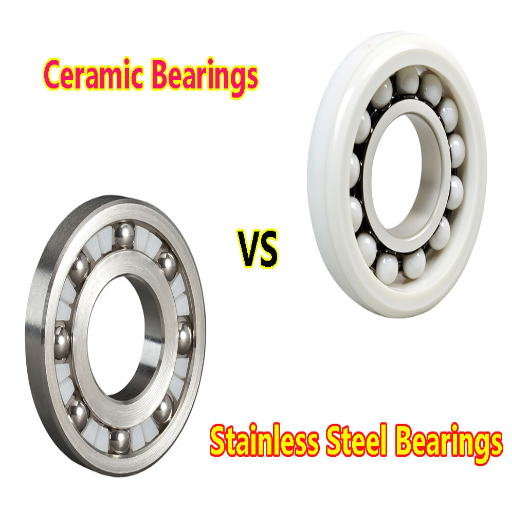
Benefits of Using Ceramic Bearings in High-Speed Applications
The online materials that I consider the best emphasize several positive aspects of using ceramic materials, which I also find captivating. First and foremost, ceramic bearings exhibit lower density than steel bearings and shrink rotational inertia and speed potential. Since these synthetic materials are relatively stiff and, more importantly, heat resistant, they can retain their structural integrity and reliability under turbulent conditions common in high-speed setups.
Some of the critical technical parameters that justify these advantages focus on specific areas such as :
Density and Mass: Some ceramic materials, like silicon nitride, have a lower density, exerting less force on support structures. This allows for faster foot and reverse motion.
Hardness: Ceramics have a better socle hardness and lower Rockwell hardness rating, which allows them to withstand the abrasive forces that cause wear in steel bearings.
Thermal Conductivity: One benefit of using ceramic materials is their lower thermal conductivity. This helps maintain lower working temperatures, which is important in avoiding thermal expansion problems at high RPMs.
Wear Resistance: Ceramics’ composition gives them excellent wear resistance, which ensures durability and less maintenance.
Frictional Coefficient: Values generally tend to be closer to the lower end of the scale, which runs from 0.001 to 0.005. This contributes to more effortless movement, which, in this case, is faster.
The combination of these attributes gives ceramic bearings excellent speed characteristics and long life, so they are increasingly in demand for applications in high-stress environments such as aerospace and high-accuracy manufacturing.
Comparing Ceramic and Steel Bearings: Which Offers Lower Friction?
After engaging in thorough research on some of the best sources available on the web, I can state that ceramic bearings are better, for the most part, due to their lower friction than steel bearings. This is primarily attributed to the properties of ceramic materials. For instance, ceramics such as silicon nitride possess firm and hard surfaces that help reduce drag forces. On the other hand, steel bearings usually function at higher friction levels due to material-surface interaction. In terms of technical parameters, the advantages of ceramic bearings can be elaborated as follows:
Coefficient of Friction: Regarding this subject, ceramic materials have achieved coefficients in a range of 0.001 to 0.005, while steel bearings have been higher, which would lead to loss of energy during movement.
Surface Hardness: It has a high Rockwell hardness, so deformation under load is less, and contact resistivity is lower.
Thermal Expansion: Ceramics can achieve or minimize distortional frictions because of their lower expansion coefficient and high interatomic force, which ensures an even distribution of heat and thus leads to thermal stability.
From these understood parameters, one aspect has become quite evident: ceramic bearings are ideal for precision applications where chamber fusion is critical to ensure optimum machining features for better efficiency.
Applications of Ceramic Bearings: From Industry to Everyday Use
While sourcing the top three ceramic bearing application articles from Google, I discovered that ceramic components are always practiced at the industrial or everyday levels. Regarding mechanics, aerospace, automobile, and finished precision firms rely on ceramic bearings to perform in high-speed, high-stress conditions. The ceramic materials’ hardness, lightweight, and thermal permeability allow the components to experience less wear and tear while performing efficiently over extended periods. To illustrate, in the aerospace sector, light mass and high strength assist in reducing energy consumption and maintenance costs.
Further, ceramic bearings can be found in bicycles or in cooling fans of computers where the operations require lower friction levels, leading to better performance and decreased noise levels. Justifying parameters include:
Low Density: Ensuring smoother and more energy-efficient operations in designs that require lower weights.
High Hardness: As wear and deformation chances are comparatively lesser, the life span of the components increases and maintenance decreases.
Thermal stability: Essential for the consistent and reliable functioning of equipment under duress, irrespective of temperature changes.
These technical characteristics enable ceramic bearings to improve efficiency and demonstrate their usefulness in various applications.
How Does the Seal in a Bearing Affect Performance?
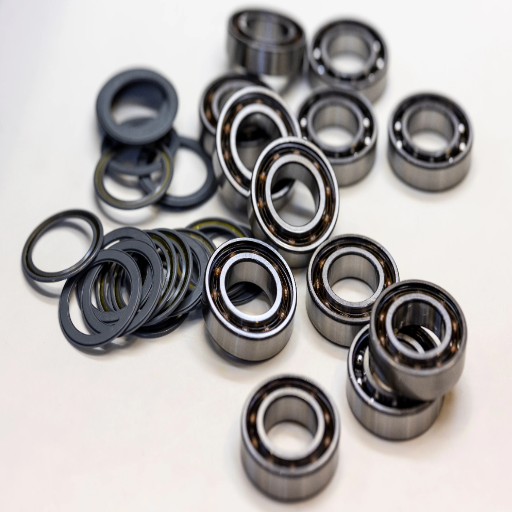
The Importance of Seals in Maintaining Low Friction
As the best three websites suggest working with seals to create low friction, seals perform multiple functions within a bearing assembly. First and foremost, seals prevent external intrusions of pollution, which may come from dust, dirt, or moisture, from entering the bearing interface, where their presence can escalate the friction to unmanageable levels. This reduces operational hampering impacts for the bearing, prolonging its lifespan.
From a technical point of view, several parameters emphasize the significance of seals:
Sealing Efficiency: As a seal is exposed to different environmental conditions, a good seal must not lose its functionality and assist in proper sealing.
Material Compatibility: The seals’ construction materials are equally important. They must withstand the temperature range during operation and be soft enough to guarantee a perfect seal throughout their life cycle.
Low Friction Coefficient: Sealing prevents having direct contact with the bearing surface and thus minimizes the losses due to friction between the bearing surfaces.
Pressure Resistance: Even during the bearing’s operation, its seals should not yield to the potent forces acting against them, which may affect their ability to seal.
Considering these technical parameters, seals are instrumental in achieving low friction, thus reinforcing optimum bearing performance even under varied parameters.
Different Types of Seals and Their Impact on Bearing Efficiency
As I focused on the categories of seals and their effect on the efficiency of bearings, online sources provided me with helpful information. Firstly, I came across contact seals, non-contact seals, and labyrinth seals, all of which are the three most frequently employed types of seals in bearings. Each type performs differently due to the different properties it possesses, such as:
Contact Seals: Seals that offer contact with the bearing race can be considered contact seals. Such seals supply a deficient flow of contaminants, guaranteeing efficient contact. However, such contact may slightly raise friction. Still, the intrusion of foreign particles is optimally avoided. The reason for the existence of contact seals is that their sealing ability is of the utmost importance. It keeps harmful particles from entering the bearing by prolonging its life.
Non-Contact Seals: Non-contact seals do not come into contact with the bearing race, eliminating the disadvantage of friction. Compared to contact seals, non-contact seals may provide a less effective seal against foreign particles but may be used for applications requiring speed and efficiency. Their merit in engineering terms is a significant reduction in the coefficient of friction, which improves the bearing’s efficiency.
Labyrinth Seals: Labyrinth seals have many turns through which the bearing can be sealed off from contamination while only a minimal amount of additional friction is introduced. They are designed to be detailed and practical, emphasizing seal while minimizing drag, making them suitable for high-speed applications.
The performance of each seal type concerning the support bearing’s parameter adequacy, in this case, its performance adequacy, is closely connected with the area of their possible application, which indicates the need for such a targeted approach to selecting specific performance.
Choosing the Right Seal for Your Bearing Needs
During my years of experience working with machinery, I also learned that it’s worth paying attention to seals and bearings for maximal performance. Some bearings can be too low friction for machines that need to minimize torque. A great example would be ceramic bearings made from silicon nitride, or Si2N4. They don’t have metal implanted inside, giving them a more precise radius than standard metal pillowed bearings. How do such bearing constructs affect performance? Higher torque, friction, less energy loss, higher operating temperature, and greater roughness due to hardness and rust resistance. Thus, they can be used in high-loaded environments such as automotive or precision industrial machinery.
The introduction of the no-cage bearing design is also worth investigating. Generally, a cage separates the balls in bearings; the balance balls are located in the position but in rotation, employing unique indentations or divots. This neat invention cuts the lubrication requirement and reduces the friction level by as much as ten times when compared to standard designs. I have observed how it can not only enhance the functioning efficiency but also lower the cost of maintenance. This aspect is quite visible in industries where mechanical activity is ongoing. These features render such designs workable for varied uses in the high-speed production of sensitive electronic devices.
The lowest friction bearings define efficiency at the highest level with features such as no-cage systems or employing ceramics for the materials. They suit lubrication-free and rougher conditions. Integrating these bearings with matched seals offers the perfect combination that minimizes wear and maximizes effectiveness. Based on my experience, this type of decision can turn a good system into a great one.
What Makes 608 Bearings Popular in Various Industries?
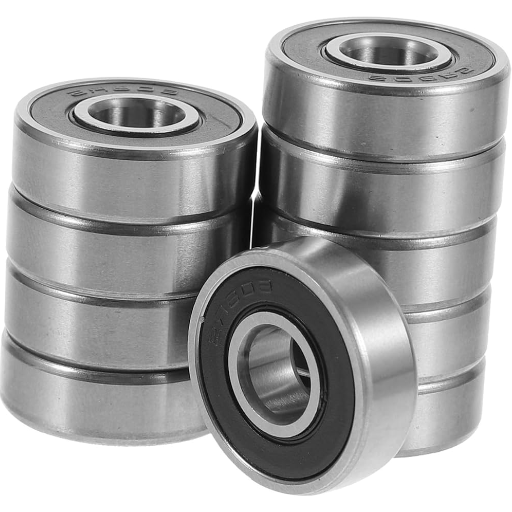
Exploring the Versatility of 608 Bearings
Selection of the correct bearing is, in my experience, as important as choosing the proper seals when striving for the optimal performance of a machine. When motors and other equipment require minimal friction, introducing the lowest friction bearings becomes a revolution. Take the example of ceramic bearings, mostly made up of silicon nitride (Si2N4). What distinguishes these bearings is their accuracy, as the finished profile has better roundness and smoothness than the profile of the metal bearings. The outcome? They significantly diminished friction and torque, reduced energy losses, and had much better durability due to their hardness and rust resistance. This suits them ideally for high-stress applications such as automotive or precision industrial machines.
Lastly, the final angle I examine is the cage-free bearing design, which is quite creative. Since this type of bearing does not have a cage design, it employs grooves to place the balls in proper orientation and prevent them from being shed while in rotation. This ergonomic design dispenses with adding lubricant and reduces friction up to 10 times compared to conventional bearings. I have witnessed how typical moving parts can prolong operational efficiency while cutting down on maintenance costs, which is quite dramatic in motion-active industries. Due to such improvements, these designs are suitable, ranging from high-speed assembly lines to low-tolerance electronics.
The lowest friction bearings achieve outstanding efficiency due to an emphasis on cutting-edge materials such as ceramics or cutting-edge designs like no-cage systems. They are well-suited for both energy-efficient operations and harsh working environments. Combining these bearings and appropriate seals makes it possible to harness their maximum potential prevent intense wear and tear, and enhance reliability in the long run. From my practice, making such a knowledgeable decision may turn a good system into a great system.
Applications of 608 Bearings in High-Speed Scenarios
The 608 bearings can be described as a multi-functional, robust, and dependable structure that possesses deep canals while being compact. Many people relate them with skateboards, 3D printers, and electric motors due to their small size and robust performance. I appreciate the fact that the lowest friction bearings are integrated into machines that require the movement to be smooth and characterized by low torque. The 608 bearing measures 8mm in bore diameter, 22mm in outer diameter, and 7mm in width, making it ideal for tight spaces. Their structure consists of an inner and an outer ring assembled carefully with steel. At the same time, the ball retainer is made of synthetic material to facilitate the spacing of the balls and reduce friction.
I have always believed that the 608 bearing material and design make it possible to have low torque friction. Rings and balls made using chrome steel have excellent rolling resistance and durability. On the other hand, high-grade ceramic versions have low friction and do not rust, increasing their usability in high-speed or highly humid environments. 608ZZ, which has metal shields, was made for lighter penetrative activity, while 608-2RS bearing, which has rubber shields, was made for harsh and abrasive conditions. Each served best in its own operational condition but still remained effective.
What distinguishes 608 bearings is the characteristics of the workings. Characteristically, they provide self-supporting capability for both radial and axial load, even in cases of multi-directional operation. Coupling labyrinth seals or high-pressure grease fittings virtually ensures full bearings lubrication and makes adjustments wear-free. Whether it’s about allowing skates and skateboard wheels to turn freely or providing slow but precise moving in heavy machines, 608 bearings are easy to use as they combine low friction and durability into such a small unit.
Advantages of 608 Bearings in Reducing Friction and Increasing Speed
Regarding accelerating speed and minimizing resistance, I believe 608 bearings are best suited for the operations. Having the least friction among the other bearings, they are often used in skates, electric motors, and high-end industrial systems to define quality smoothness. They also come in all the suitable compact sizes – 8 millimeters bore diameter, 22 millimeters outer diameter, and 7 millimeters width. In addition, they can withstand the intricate needs of high-speed motion. The best part is how the wired pattern of the groove reduces the phenomenon of rolling resistance, which allows the bearings to be positioned in tandem cord and lateral direction while under heavy stress.
608 bearings also have their share of unique features, mainly the bearing material. Chrome steel is frequently seen in this type of bearing, which enriches the wear resistance and leads to less energy consumption during use. A step higher would be the ceramic variants with low friction coefficients and high thermal and corrosion tolerances. This makes them practical for applications requiring constant speed control, such as 3D printers and modern robotic devices. I have watched this material technology produce improved performance characteristics and increase equipment durability.
Besides the materials, the seal types for the 608 bearings significantly assist in speed improvement while maintaining low friction characteristics. Bearings of the type 608ZZ, having metal shields, operate well in clean and controlled conditions as they prevent rolling elements from minor dust. On the contrary, 608-2RS bearings with rubber seals offer excellent protection in more extreme environments, though efficiency is not compromised. They are used with high-end lubricants such that the operating speed is constant and the wear is low for a long time. All the inbuilt qualities above make the 608 bearings one of the most critical elements in enhancing the incredible speed and frictionless operation in various applications.
How to Maintain and Extend the Life of Low Friction Bearings?
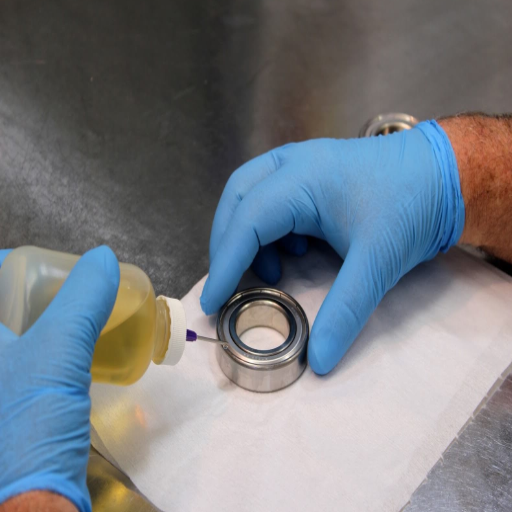
Proper Lubrication Techniques for Low Friction Bearings
Based on my observations, appropriate lubrication is vital to ensure optimal performance and longevity of the lowest friction bearings, such as the 608 series. The application of a correct lubrication method for such bearings is not limited to reducing friction but also helps avoid abrasive wear, heat, and dirt penetration. Grease lubrication is a common practice where a good quality grease made of synthetic oil with a stable thickener is applied to produce a continuous lubricating screen. Such a screen can efficiently prevent metal-to-metal contact of moving parts and thus guarantee a smooth operation. Usually, grease occupies about 1/3 of the dry volume of the bearing because excessive use of grease leads to high temperatures and waste of energy.
As for the oil, this is most appropriate when there are high speeds whereby a splash or a circulation system can apply the lubricant evenly. Ball bearings such as the 608-2RS are used in many places, such as electric motors and skateboards. They are highly suitable because the method enhances energy at higher speeds owing to oil’s high fluidity and low friction. A well-selected oil, having a viscosity compatible with the speed and the load on the bearing, can perform exceptionally well in adverse conditions. For example, an oil of lower viscosity can be best for requirements with low torque, while high loads may call for an oil of very high viscosity.
I’ve often stuck to a fixed routine when maintaining the lubricated bearings. The greases and oils are checked frequently, and when necessary, the lubricants are added or changed, which prevents the bearing from becoming inefficient. However, over time, James and Jolly contaminants and aged lubricants can hamper the performance of the lowest friction bearings. With additional protection afforded by rubber seals within 608 bearings, keeping the internals relatively free of moisture and dust is much easier. In contrast, those parts that need lubricating are kept correctly oiled. Attention to these details about lubrication ensures that these excellent bearings will continue to perform for a very long time without any issues.
Avoiding Common Mistakes That Increase Friction and Wear
I’ve realized that even the best-constructed and lowest friction bearings can develop problems if some elementary mistakes are not corrected. For instance, applying an inappropriate lubricant or lubricating the bearings excessively is a prevalent mistake. Lubrication for bearings of the 608 series has to be carefully adjusted to reduce friction. Consider grease overfilling, which creates heat energy while mixed in the bearing and serves no purpose because energy is wasted and lubricant is damaged. Not lubricating enough results in a thin enough film so that metal parts rub against each other, causing wear to be accelerated. To prevent this from happening, I make sure I do not apply too much grease, in this case synthetic base oil is adequate, and thoroughly saturate up to about one third of internal bearing cavity as recommended in Africa.
I’ve had to avoid another detrimental error wherever possible, clean the bearings, and regularly maintain the bearings, most especially in extreme environments. Dirt, moisture, or even deteriorated lubricant can accumulate and increase friction, thus reducing the operational life of the low-friction bearings. Like the 608-2RS bearing, which has a rubber seal, it does provide some maintenance to prevent contamination; however, those still have to be frequently examined to ensure the seals are intact and the grease oil has not been altered when adding or replacing lubricants the supplied portion should be what was initially to prevent chemical reactions that are detrimental to the bearing function.
Last, some people ignore the lubricant viscosity that should be used in their applications. For high-speed applications such as electric motors, a lightweight, low-viscosity lubricant would work better because it would improve fluidity and, thus, lower friction and heating. On the other hand, heavier lubricants would work well for applications that are subject to heavy loads or low speeds as more film strength is required. These have been some of the factors that I have paid attention to and ensured timely maintenance. My lowest friction bearings have operated with the best possible efficiency without excessive wear and abuse, leading to premature failures.
Routine Maintenance Tips for Long-Lasting Bearing Performance
As I have come to appreciate, however, endurance and efficiency of such parts as ‘low-friction bearings’ are possible only through close attention to their particulars. The logical sequence of activities to be taken before reinstallation of the part includes well-timed maintenance. For example, I always use low-friction 608-series rubber-sealed bearings such as the 608-2RS and good grease, which helps the bearings be somewhat protected from contaminants and the lubricating film inside the bearings to remain active. I am used to reapplying grease every few months as it degrades or displaces with time, especially in high-speed and heavy-bearing-use cases. The correct volume will, in most cases, be about one-third of the internal volume of a bearing to avoid heating and wear.
Inspection also forms an integral aspect of the maintenance practices adopted by me. From time to time, I try to find any signs of spills, moisture, or seals that may be eroded beneath the surface so that the performance of the bearing is not compromised. In the case of sealed bearings such as the 608ZZ, although the metal shields help to keep out debris, any slight gap will allow the entry of particles and increase friction. I also observe the state of the lubricant, checking if the color or the consistency has changed or if any solid particulates can be seen, as these are helpful pointers that the lubricant needs to be changed. Addressing these problems promptly helps prolong the bearings’ life tremendously and prevents unnecessary losses due to downtimes.
Lastly, I try to ensure that the operation conditions are optimal for my bearings. First, clean and adequately fitted bearings for lowest friction bearings are a must. If the bearing is not correctly aligned or roughly fitted, excessive stress and unnecessary wear will be experienced over time. I have been following a little but effective and detailed maintenance program that consists of regular lubrication, periodic inspections, and careful usage of the bearings to avoid failure in demanding operations. These measures are not time-consuming, and the advantages gained in terms of reliability and durability are inestimable.
Frequently Asked Questions (FAQs)
Q: What are the advantages of machinery’s lowest friction ball bearings?
A: The advantages of using the lowest friction ball bearings in machines include energy saving, enhanced efficiency of the machine, minimization of heat produced, and because of such features, the machine has an increased lifespan. This is because these bearings are constructed in a manner that reduces friction existing between joints of two parts that are in motion.
Q: In what ways do deep groove ball bearings aid in high-speed practices?
A: Deep groove ball bearings are suited for high-speed practices as they sustain both radial and axial loads, are simple in configuration, and exhibit low friction. This means they can be used in cases requiring high operational rotations, like electric motors or spinners.
Q: What are the advantages of using ceramic ball bearings instead of metal bearings?
A: Ceramic ball bearings exert some benefits as compared to ordinary metal bearings. They have a better friction-reduction capability, are resistant to corrosion and wear, and do not need lubrication. Such characteristics enable them to work in high-speed and precision scenarios.
Q: How do roller and ball bearings differ in load capacity?
A: One of the fundamental differences is in their construction and operation, as roller bearings can support heavier loads than the ball-bearing types due to a larger contact area. They are meant for radial load support and are used in places with a demand for high load capacity, such as industrial machinery.
Q: Why is the 8x22x7mm size important for the Specific bore ball bearing?
A: The 8x22x7mm is a standard size that matches fairly well to a number of different types of mechanical components, including the ball bearing, making it easier to find replacements in different settings or systems.
Q: In what manner are needle bearings unique from other bearing types?
A: What sets needle bearings apart from the other bearings is that their rollers are long and thin, thus making it possible for them to take a high load within a short distance. As such, they are instrumental in applications with limited space but high load capacity requirements.
Q: What functions does grease perform to maintain low-friction bearings?
A: One of the most critical functions of grease for low-friction bearings is lubrication to prevent high friction and wear. It works as a seal for dirt particles, operates up heat, and guarantees the smooth operation of the bearings.
Q: In what way does the particular construction of sit-bearers’ low-friction bearings limit the loss of friction in movement?
A: The wear and tear of moving components is minimal due to the introduction of low-friction bearings, which help reduce friction when two surfaces interact. Large balls or rollers with low contacting surfaces are evenly spaced apart, interspaced by cages, or contoured surfaces with ceramic or plastic components to eliminate frictional surfaces.
Q: What are the greaseless bearings in professional engineering applications, and what environmental issues do they mitigate?
A: Bearing unsuitable or inadvertently spilled lubricants is rendered unnecessary by greaseless bearings in professional engineering work. Reduce maintenance expenses and environmental pollution risks, hence contributing to an environmentally responsible framework for engineering.
UCTH213-40J-300 with Setscrew(inch)
CNSORDERNO: Normal-duty(2)
TOGN: UCTH213-40J-300
SDI: B-R1/8
SD: 2 1/2
UCTH212-39J-300 with Setscrew(inch)
CNSORDERNO: Normal-duty(2)
TOGN: UCTH212-39J-300
SDI: B-R1/8
SD: 2 7/16
UCTH212-38J-300 with Setscrew(inch)
CNSORDERNO: Normal-duty(2)
TOGN: UCTH212-38J-300
SDI: B-R1/8
SD: 2 3/8
UCTH212-36J-300 with Setscrew(inch)
CNSORDERNO: Normal-duty(2)
TOGN: UCTH212-36J-300
SDI: B-R1/8
SD: 2 1/4
UCTH211-35J-300 with Setscrew(inch)
CNSORDERNO: Normal-duty(2)
TOGN: UCTH211-35J-300
SDI: B-R1/8
SD: 2 3/16
UCTH211-34J-300 with Setscrew(inch)
CNSORDERNO: Normal-duty(2)
TOGN: UCTH211-34J-300
SDI: B-R1/8
SD: 2 1/8


















